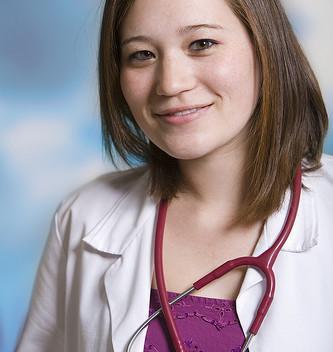
Traditionally, when women went in to the medical field, they were focused on a career as a nurse or nurse’s aide. In the past, women were excluded from the role of physician, and they were relegated to being one who cares for the ill or injured. The restriction of women in to the profession was a worldwide barrier to them.
There were laws in place to keep them from providing medical care to patients, even though, they were technically practicing as they nursed patients back to health.
Women found themselves unable to attend universities and schools that would teach them medicine, so they founded their own schools of medicine, like the Edinburgh School of Medicine for Women, which was founded in 1886.
Even though the number of women enrolled in medical universities in the United States is close to 50 percent, the women are not moving into specialized medicine studies like surgery. According to studies, women do tend to have the lead in pediatrics, gynecology, family medicine and psychiatry over their male counterparts.
Women Unite
Since the industry has a long history of excluding women, there are many organizations that have been developed to provide women with a network of like-minds in order to encourage and exchange information.
Federations, like the Australian Federation of Medical Women (AFMW), were established to help women achieve their goals in their medical professions and ensure that they had a voice when there were incidents of inequality. This particular federation was loosely established in the 1800s in order to bring unity to the few female doctors in the country. It was solidified in 1927, and it offers the members a functional network of information and experience.
Recognizing the Achievements
Advancements made by female physicians have given current doctors ample opportunities to succeed at their chosen professions. The National Library of Medicine in the United States offers exhibits of the pioneers of the medical fields.
Women like Dr. Matilda Evans, who practiced medicine in South Carolina are recognized. It may not sound remarkable other than the fact she is the first African American woman to do so, and the year was 1897. Many other women have forged their way through the obstacles and achieved their degrees in medicine.
Because of these pioneering women, the opportunity to achieve degrees in any medical profession is now possible for any woman who possesses the desire and the will. Women are no longer relegated to nursing, nor are they limited to one country. There are opportunities for women to practice medicine wherever they choose.
Permanent or Temporary
Not all jobs need be permanent for doctors. While some doctors will want to start a practice and settle down in one area, there are many who will see the graduate degree as a way to travel and gain worldwide experience.
There are plenty of places in the world that would welcome a Senior House Officer willing to assist the local physician. Doctors who have been trained in other countries often have newer techniques and medicines.
Temporary work enables a doctor to change jobs without committing to relocation. This type of work gives them a chance to do something different and rewarding. Some companies specialize in placing junior house officers in an area that needs temporary assistance. Temporary work helps round out their experience.
Women bring skills that complement their male counterparts, and a medical environment with a strong female presence has a positive affect on atmosphere, colleague relationships, and work in general. Thankfully, this male-dominated sector is moving in the right direction, and everyone, from patients to doctors, should be pleased about it.

